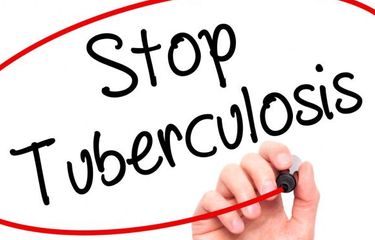
New World Health Organization (WHO) guidelines to help countries accelerate efforts to stop the spread of tuberculosis (TB) infection by treating the sick with TB and providing prevention of transmission.
WHO estimated that a quarter of the world’s population is infected with TB bacteria. These people have no symptoms or transmission. However, they are at greater risk of developing TB disease, especially those with weak immunity. Establishing treatment, TB prevention will not only protect them from getting sick but also reduce the risk of transmission in the community.
As we commemorate World TB Day 2020, this disease remains the world’s top infectious killer. In 2018, as many as 10 million people fell ill with TB worldwide and 1.5 million people lost their lives to the disease.
“COVID-19 highlights how vulnerable people are with lung disease and weakened immune systems,” said Dr Tedros Adhanom Ghebreyesus, WHO Director-General. “The world is committed to ending TB by 2030; increasing prevention is the key to making it happen. Millions of people need to be able to get treatment and prevention of TB transmission to stop disease, prevent suffering and save lives.”
Dr Tedros highlighted the importance of continuing efforts to address longstanding health problems, including TB during global outbreaks such as COVID-19. At the same time, existing programs to combat TB and other infectious diseases can be leveraged to make the response to COVID-19 more effective and rapid.
Although some progress has been made towards the targets set at the 2018 UN high-level meeting on TB, preventive TB treatment has been largely neglected. Global leaders are committed to ensuring access to TB treatment and prevention for at least 24 million people in contact with active TB and 6 million people living with HIV by 2022. To date only a small part of the target has been achieved, with countries the country placed fewer than 430,000 households in contact with people with TB and 1.8 million people living with HIV on TB treatment in 2018.*
TB remains the leading cause of death among people with HIV. Preventive TB treatment works synergistically with antiretroviral therapy to prevent TB and save lives. Strengthened efforts by government, health services, health partners, community leaders and the general public will be needed to increase access to TB prevention treatment to targeted levels.
The new consolidated guidelines recommend a series of innovative approaches to improve access to TB preventive treatment:
- WHO recommends increasing preventive TB treatment among populations at highest risk including household contact with TB patients, people living with HIV and others at risk with lower immunity or living in crowded places.
- WHO recommends the integration of TB preventive treatment services into ongoing case finding efforts for active TB. All household contacts with TB patients and people living with HIV are recommended to be screened for active TB. If active TB is ruled out, they should start TB preventive treatment.
- WHO recommends that the tuberculin skin test or interferon-gamma release test (IGRA) be used to diagnose TB infection. Both tests help identify people with TB to benefit from TB preventive treatment but should not be a barrier to improving access to TB services. Testing for TB infection is not necessary before starting TB preventive treatment in people living with HIV, and children under 5 years of age who are in contact with people with active TB.
- WHO recommends a new, shorter option for preventive treatment other than the widely used 6-month daily isoniazid. Shorter options now recommended range from a daily regimen of 1 month of rifapentin plus isoniazid to 3 months of rifapentine plus isoniazid weekly, daily rifampin plus isoniazid 3 months, or daily rifampin alone for 4 months.
“As people around the world gather to commemorate World TB Day, WHO calls on governments, affected communities, community organizations, health care providers, health partners, and industry to unite forces and enhance the TB response – especially for TB preventive treatment. – to make sure no one is left behind,” said Dr Tereza Kasaeva, Director of the WHO Global TB Programme. “The new WHO guidance points the way forward for millions of people to quickly access new tools and shorter and safer options for preventative care. Now is the time to act.”
Preventive TB treatment is an affordable intervention that can prevent families from falling into poverty and maintain the health and economy of the entire community. WHO anticipates that when new and safer drugs hit the market, at affordable prices, it will be a very effective way to save millions of lives.
Source : https://www.who.int/news/item/24-03-2020-new-who-recommendations-to-prevent-tuberculosis-aim-to-save-millions-of-lives

Recent Comments